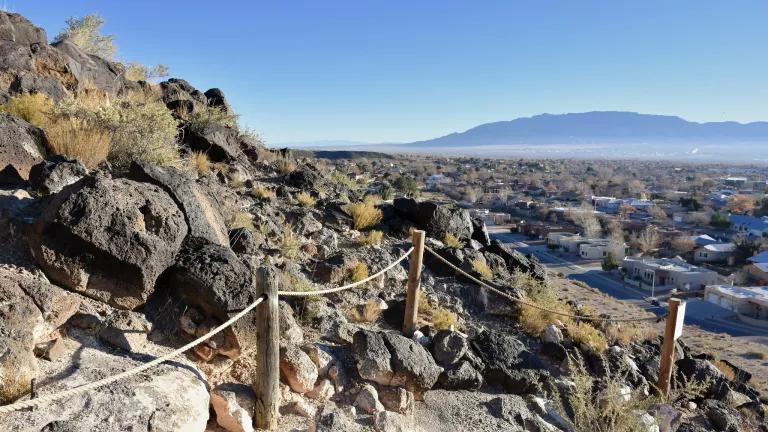A Crucial Moment for Energy Efficiency in Colorado
The Public Utilities Commission of Colorado (“the Commission”) will soon decide the future of Xcel’s energy efficiency programs. Earlier this year, the state legislature gave the Commission authority to set new ten-year savings goals. This summer, the Commission cleared the way for greater savings by eliminating the utility’s disincentive for reducing energy consumption. Governor Hickenlooper followed up with an executive order pushing for utilities to achieve savings equivalent to two percent of sales per year, a move that could bring huge economic benefits to the state.
Unfortunately, and incredibly, after all this momentum, Xcel filed a proposal to cut its energy efficiency investments! NRDC and the Sierra Club filed testimony from an outside expert at Energy Futures Group showing that Xcel could achieve significantly greater energy savings than they proposed and recommended that the Commission reject the request to lower the goals.
What should the Commission do?
The Commission can save consumers money, make progress towards the Governor’s goals, and reduce Colorado’s contribution to climate-warming pollutants.
To do so, we encourage the Commission to:
- Reject Xcel’s proposal and instead establish the following annual savings requirements: 550 gigawatt-hours (GWh) in 2019, 575 GWh in 2020, and 500 GWh in each of 2021-2023.
- Ensure that Xcel continues to provide ample opportunities for all customer segments, including the most vulnerable communities. Historically, the utility has failed to meet its potential in this area, and the Commission should encourage it to do better.
- Recommend that Xcel use geo-targeted energy efficiency only in addition to broad-based programs—not to replace them.
The proposal does not align with Colorado’s goals
In his July 2017 Executive Order, Governor Hickenlooper set a goal to achieve electricity savings of 2 percent of total sales per year by 2020 through energy efficiency.
Xcel’s proposed targets are insufficient. With savings equal to 1.15 percent of sales in 2019 and 2020, the proposed goals fall short of both the 2 percent in the Executive Order and the 1.88 percent that Energy Futures Group determined was achievable.
Xcel underestimates its ability to save energy
Xcel claims that the current goals are too high to feasibly achieve based on a flawed potential study (analysis of the achievable potential for electricity savings, authored by Navigant consulting). Last week’s testimony demonstrates, however, that the desired savings are achievable—and that the Navigant study underestimates the potential for energy efficiency to decrease electricity usage.
Xcel argues that changes in the retail lighting market, combined with increasingly strict building codes and standards, lower the potential for energy efficiency gains and prevent them from achieving the desired electricity savings. Meanwhile, other utilities have proposed greater savings while considering the same factors. An electricity company in Rhode Island, for example, explicitly accounted for the potential impact of codes and standards yet still proposed savings of 2.4 percent of sales. Similarly, a Maryland utility proposed savings of 2 percent of sales while acknowledging that the low-hanging efficiency fruit were mostly gone. Colorado, which ranks 18th in the country in energy efficiency, can do better.
A few specific underestimates in Xcel’s study:
- The Navigant analysis does not adequately account for the limitations of potential studies. Potential studies use assumptions for typical performance, rather than optimal program performance, so they tend to underestimate the results of well-designed, properly executed programs. For this reason, many utilities, including Xcel, have historically outperformed the predictions in potential studies.
- Navigant underestimates the potential for improvements in residential and commercial lighting. Xcel could achieve three times more savings from lighting than Navigant predicted.
- Several other factors, including Strategic Energy Management and incentives for Heating Ventilation and Air Conditioning (HVAC) systems, offer further energy savings that are not included in Navigant’s analysis.
- The historical record reveals further potential for improvements. Xcel has consistently proposed higher budgets than are necessary to meet its targets. Were they to fully utilize their budget, they could have achieved an average of 15 percent more electricity savings from 2014 to 2016. This record is evidence enough that the targets should be higher, not lower, than in previous years.
The targets are too low, but Xcel provides some good ideas
Xcel proposes to use geo-targeted energy efficiency—a tool that targets DSM programs to specific locations—to capture energy savings in areas that are constrained by growing demand and limited supply. Geo-targeted energy efficiency could prevent expensive infrastructure investments by reducing demand and preventing the need to build new supply.
Unfortunately, Xcel’s proposal to use targeted strategies as a replacement for other, broad-based energy efficiency programs is a bad idea. It is not in the best interest of customers, nor is it consistent with the statewide goals. Instead, the company should use geo-targeted programs to supplement its system-wide approaches, not replace them.



